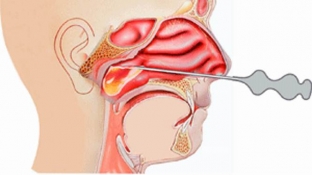Endoscopic surgery is becoming more and more popular every day among practicing surgeons. Doctors of various specialties are trained in the techniques of endoscopic operations, since the indisputable advantages of just such a surgical intervention have already been repeatedly proven. Endoscopic surgery is widely used in otorhinolaryngology as one of the methods of surgical intervention. Endoscopic sinus surgery is one of the most effective methods for treating inflammatory diseases of the sinuses, which is gaining the love of an increasing number of doctors who prefer this particular type of surgical intervention.
Indications and contraindications for endoscopic sinus surgery
The very concept of functional endoscopic surgery is based on minimal surgical intervention on the structures of the nasal cavity with the maximum restoration of their physiological functions. There are certain indications and contraindications for endoscopic sinus surgery. The indications for the operation are as follows:
- acute and chronic, serous and exudative sinusitis;
- limited polyposis sinusitis;
- fungal inflammatory processes of the nasal sinuses;
- sinus cysts;
- foreign bodies in the nasal cavity and paranasal sinuses;
- bulls and hyperplasia of the nasal mucosa;
- Dacryocystorhinostomy.
Endoscopic sinus surgery is not recommended for the following conditions:
- intracranial and orbital rhinogenic complications;
- malignant neoplasms of the nasal cavity and sinuses;
- osteomyelitis in the area of the paranasal sinuses;
- cicatricial and bone obliteration of the fistula area after previous operations on the nasal sinuses.

Messerklinger endoscopic sinus surgery technique
There are two main techniques for endoscopic sinus surgery. The most widely used is the Messerklinger technique. The technique of this surgical intervention consists in step-by-step opening of the structures of the nose in the direction from front to back. The nasal sinuses and pathological changes detected during the surgical intervention are sequentially opened. Step by step, structures are opened in the following order:
- uncinate process;
- ethmoid bulla;
- Anterior cells of the ethmoid labyrinth;
- infundibulum and fistula of the maxillary sinus;
- frontal bay;
- middle grid cells;
- rear grill cages;
- sphenoid sinus.
Wiegand endoscopic procedure
The second most common endoscopic sinus surgery is the Wiegand technique. According to this technique, surgical intervention begins with the deep parts of the nasal cavity and moves from back to front. First, the sphenoid sinus is opened, then the posterior and middle cells of the ethmoid labyrinth, then infundibulotomy is performed, and at the end of the operation, the anterior cells of the ethmoid labyrinth are opened. A feature of the method of endoscopic surgery of the sinuses according to Wiegand is its great radicalness, since a total opening of the cells of the ethmoid labyrinth is performed and an anastomosis with the maxillary sinus under the inferior turbinate is superimposed. This is done in almost all forms of sinusitis.
Benefits of Endoscopic Sinus Surgery
Endoscopic sinus surgery has special advantages over other types of sinus surgery. First of all, only endoscopic surgery guarantees maximum constant visual control over the course of the entire operation, and thus ensures high accuracy and functionality of all actions performed by the operating surgeon. In addition, endoscopic intervention ensures minimal bleeding and preservation of the mucous membrane pathologically unchanged. The postoperative period for patients is also much faster and painless. Thus, endoscopic sinus surgery is one of the most effective methods of treating sinusitis.







Add a comment